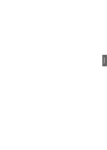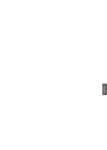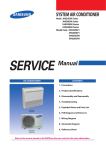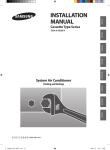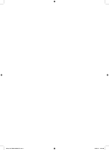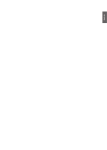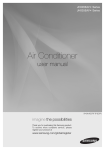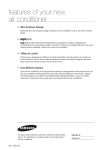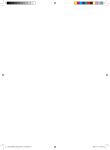Download Samsung JH026EAV Installation manual
Transcript
Safety Precautions (Carefully follow the precautions listed below because they are essential to guarantee the safety of the equipment.) WARNING • Always disconnect the air conditioner from the power supply before servicing it or accessing its internal components. • Verify that installation and testing operations are performed by qualified personnel. • Verify that the air conditioner is not installed in an easily accessible area. GENERAL INFORMATION Carefully read the content of this manual before installing the air conditioner and store the manual in a safe place in order to be able to use it as reference after installation. For maximum safety, installers should always carefully read the following warnings. Store the operation and installation manual in a safe location and remember to hand it over to the new owner if the air conditioner is sold or transferred. This manual explains how to install an indoor unit with a split system with two SAMSUNG units. The use of other types of units with different control systems may damage the units and invalidate the warranty. The manufacturer shall not be responsible for damages arising from the use of non compliant units. The manufacturer shall not be responsible for damage originating from unauthorized changes or the improper connection of electric and requirements set forth in the “Operating limits” table, included in the manual, shall immediately invalidate the warranty. The air conditioner should be used only for the applications for which it has been designed: the indoor unit is not suitable to be installed in areas used for laundry. Do not use the units if damaged. If problems occur, switch the unit off and disconnect it from the power supply. In order to prevent electric shocks, fires or injuries, always stop the unit, disable the protection switch and contact SAMSUNG’s technical support if the unit produces smoke, if the power cable is hot or damaged or if the unit is very noisy. Always remember to inspect the unit, electric connections, refrigerant tubes and protections regularly. These operations should be performed by qualified personnel only. The unit contains moving parts, which should always be kept out of the reach of children. Do not attempt to repair, move, alter or reinstall the unit. If performed by unauthorized personnel, these operations may cause electric shocks or fires. Do not place containers with liquids or other objects on the unit. All the materials used for the manufacture and packaging of the air conditioner are recyclable. The packing material and exhaust batteries of the remote control(optional) must be disposed of in accordance with current laws. The air conditioner contains a refrigerant that has to be disposed of as special waste. At the end of its life cycle, the air conditioner must be disposed of in authorized centers or returned to the retailer so that it can be disposed of correctly and safely. INSTALLING THE UNIT IMPORTANT: When installing the unit, always remember to connect first the refrigerant tubes, then the electrical lines. Always disassemble the electric lines before the refrigerant tubes. Upon receipt, inspect the product to verify that it has not been damaged during transport. If the product appears damaged, DO NOT INSTALL it and immediately report the damage to the carrier or retailer (if the installer or the authorized technician has collected the material from the retailer.) After completing the installation, always carry out a functional test and provide the instructions on how to operate the air conditioner to the user. Do not use the air conditioner in environments with hazardous substances or close to equipment that release free flames to avoid the occurrence of fires, explosions or injuries. POWER SUPPLY LINE, FUSE OR CIRCUIT BREAKER Always make sure that the power supply is compliant with current safety standards. Always install the air conditioner in compliance with current local safety standards. Always verify that a suitable grounding connection is available. Verify that the voltage and frequency of the power supply comply with the specifications and that the installed power is sufficient to ensure the operation of any other domestic appliance connected to the same electric lines. Always verify that the cut-off and protection switches are suitably dimensioned. Verify that the air conditioner is connected to the power supply in accordance with the instructions provided in the wiring diagram included in the manual. Always verify that electric connections (cable entry, section of leads, protections…) are compliant with the electric specifications and with the instructions provided in the wiring scheme. Always verify that all connections comply with the standards applicable to the installation of air conditioners. E-2 ENGLISH Contents Preparation for installation . . . . . . . . . . . . . . . . . . . . . . . . . . . . . . . . . . . . . . . . . . . . . . . . . . . . . . . . . . . . Deciding on where to install the indoor unit . . . . . . . . . . . . . . . . . . . . . . . . . . . . . . . . . . . . . . . . . . Indoor unit installation . . . . . . . . . . . . . . . . . . . . . . . . . . . . . . . . . . . . . . . . . . . . . . . . . . . . . . . . . . . . . . . . Purging the unit . . . . . . . . . . . . . . . . . . . . . . . . . . . . . . . . . . . . . . . . . . . . . . . . . . . . . . . . . . . . . . . . . . . . . . Connecting the refrigerant pipe . . . . . . . . . . . . . . . . . . . . . . . . . . . . . . . . . . . . . . . . . . . . . . . . . . . . . . Cutting/Flaring the pipes . . . . . . . . . . . . . . . . . . . . . . . . . . . . . . . . . . . . . . . . . . . . . . . . . . . . . . . . . . . . . Performing leak test & insulation . . . . . . . . . . . . . . . . . . . . . . . . . . . . . . . . . . . . . . . . . . . . . . . . . . . . . Drain hose installation . . . . . . . . . . . . . . . . . . . . . . . . . . . . . . . . . . . . . . . . . . . . . . . . . . . . . . . . . . . . . . . . Connecting the connection cord . . . . . . . . . . . . . . . . . . . . . . . . . . . . . . . . . . . . . . . . . . . . . . . . . . . . . Assigning address to indoor unit . . . . . . . . . . . . . . . . . . . . . . . . . . . . . . . . . . . . . . . . . . . . . . . . . . . . . Troubleshooting . . . . . . . . . . . . . . . . . . . . . . . . . . . . . . . . . . . . . . . . . . . . . . . . . . . . . . . . . . . . . . . . . . . . . . Additional accessories . . . . . . . . . . . . . . . . . . . . . . . . . . . . . . . . . . . . . . . . . . . . . . . . . . . . . . . . . . . . . . . . Testing operations . . . . . . . . . . . . . . . . . . . . . . . . . . . . . . . . . . . . . . . . . . . . . . . . . . . . . . . . . . . . . . . . . . . . 4 5 7 8 9 10 11 12 13 14 15 20 22 E-3 Preparation for installation When deciding on the location of the air conditioner with the owner, the following restrictions must be taken into account. General Do NOT install the air conditioner in a location where it will come into contact with the following elements: Combustible gases Saline air Machine oil Sulphide gas Special environmental conditions If you must install the unit in such conditions, first consult your dealer. Avoid installing the air conditioner: In areas where it is exposed to direct sunlight. Close to heat sources. In damp areas or locations where it could come into contact with water (for example rooms used for laundry) In areas where curtains and furniture could affect the supply and discharge of air. Without leaving the required minimum space around the unit (as shown in the drawing). In scarcely ventilated areas. On surfaces that are unable to support the weight of the unit without deforming, breaking or causing vibrations during the use of the air conditioner. In a position that does not enable the condensate drainage pipe to be correctly installed (at the end of the installation. It is always essential to check the efficiency of the drainage system.) Only for floor standing type installation. Accessories The following accessories are supplied with the indoor unit. The type and quantity may differ depending on the specifications. E-4 User’s manual Installation manual Insulation Install Outlet Insulation Install SVC Cable-tie Wireless remote control Battery ENGLISH Deciding on where to install the indoor unit Indoor unit This unit has to be installed as floor type only. There must be no obstacles near the air inlet and outlet. Select a convenient location that permits the air to reach every corner of the area to be cooled. Pre-plan for easy and short routing of the refrigerant tubing and wiring to the outdoor unit. There should be no flammable gas, alkaline, substances present in the air. Maintain sufficient clearance around the indoor unit. Make sure that the water dripping from the drain hose runs away correctly and safely. Do not install the unit where it will be exposed to direct sunlight. Space requirements for indoor unit �� �� � ��� �� ��� ��� � ��� ��� � �� ��� ��� ��� � ��� � CAUTION The units must be installed according to distances declared, in order to permit accessibility from each side, either to guarantee correct operation of maintenance or repairing products. The unit’s parts must be reachable and removable completely under safety condition (for people or things). This model can be installed with no side space. But it is recommended installing like above. E-5 Deciding on where to install the indoor unit (Continued) Drawing of the indoor unit 720 Description No. Name JH035EAV JH026EAV 1 2 3 4 Liquid pipe connection Gas pipe connection Drain pipe connection Power supply connection ø6.35 ø9.52 Dimension And Weight Net Dimension Net Weight Indoor Unit Outdoor Unit Indoor Unit Outdoor Unit ø6.35 ø9.52 ID: ø12 ; OD: ø18 1 Wire , 2.5mm² JH026EAV mm kg JH035EAV 720*620*199 790*548*285 15.2 35.5 Model JH026EAV JH035EAV Capacity(C/H) 2.6/3.5kw 3.5/4.0kw Power Input(C/H) 0.67/0.97kw 1.090/1.108kw Running Current(C/H) 3.3/4.7A 5.2/5.3A Refrigerant 950g 950g Fuse(1st/2nd) 2.0/1.6A 2.0/1.6A Maximum installation height: up to 3.6m Condensate discharge pump(built-in): Max. 750mm Length of pipes and difference in height: see the outdoor unit installation manual Vacuum and refrigerant charge: see the outdoor unit installation manual E-6 Indoor unit installation 1 When you install the indoor with side-pipe connection, please make space more than 300mm from the wall. ENGLISH It is recommended to install the refnet joint before installing the indoor unit 300m m 300m m 2 When you install the indoor at the inclined floor, please lean the set toward the drain hose and pipe connection to prevent water overflowing. Position of drain Position of drain Screw Hole The body front should be opened to connect pipes. Please release the 4 screws of body front and then pull it out from the bottom of the set. Screw Hole 3 E-7 Indoor unit installation(Continue) 75mm 4 Make a hole on the wall. 5 The pipes & cable should be gone through the bottom back hole. 6 Please remove 6 items when set is installed. Ø60~65mm Drain hose Less than 70mm Inside room Outside room Purging the unit Liquid refrigerant port Gas refrigerant port From factory the unit is supplied and set with a pre-charge of nitrogen gas (insert gas). Therefore, all insert gas must be purged before connecting the assembly piping. Unscrew the pinch pipe at the end of each refrigerant pipe. Result: Note The designs and shape are subject to change according to the model. E-8 All inert gas escapes from the indoor unit. To prevent dirt or foreign objects from getting into the pipes during installation, do NOT remove the pinch pipe completely until you are ready to connect the piping. ENGLISH Connecting the refrigerant pipe There are two refrigerant pipes of different diameters: 1 A smaller one for the liquid refrigerant A larger one for the gas refrigerant The thickness of tube should not be less than 1.0mm. The inside of copper tube must be clean & has no dust. Refrigerant oil Remove the pinch pipe on the pipes and connect the assembly pipes to each pipe, tightening the nuts, first manually and then with a torque wrench, a spanner applying the following torque. Outer Diameter 6.35 mm (1/4”) 9.52 mm (3/8”) 12.70 mm (1/2”) 15.88 mm (5/8”) 19.05 mm (3/4”) Note Torque (N•m) 18 42 55 65 100 Spanner Flare nut Union If the pipes must be shortened refer to page 10. 2 Must use insulator which is thick enough to cover the refrigerant tube to protect the condensate water on the outside of pipe falling onto the floor and the efficiency of the unit will be better. 3 Cut off any excess foam insulation. 4 Be sure that there must be no crack or wave on the bended area. 5 It would be necessary to double the insulation thickness(10mm or more) to prevent condensation even on the insulator when if the installed area is warm and humid. 6 Do not use joints or extensions for the pipes that connect the indoor and outdoor unit. The only permitted connections are those for which the units are designed. CAUTION Torque wrench Connect the indoor and outdoor units using pipes with flared connections(not supplied). For the lines, use insulated, unwelded, degreased and deoxidized copper pipe,(Cu DHP type to ISO1337), suitable for operating pressures of at least 4200kPa and for a burst pressure of at least 20700kPa. Copper pipe for hydro-sanitary applications is completely unsuitable. Spring pipe CAUTION Use the bender which have a minimum bending radius when you bend the pipe. Be careful so that the pipes is bended one time only. Piping will be very difficult if you repeat the bending more than twice. If you bend the pipe by using spring Bending radius should be more than 100mm so that pipe is not distorted. For sizing and limits (height difference, line length, max. bends, refrigerant charge, etc.) see the outdoor unit installation manual. All refrigerant connection must be accessible, in order to permit either unit maintenance or removing it completely. E-9 Cutting/Flaring the pipes 1 Make sure that you have the required tools available. (pipe cutter, reamer, flaring tool and pipe holder). 2 If you wish to shorten the pipes, cut it with a pipe cutter, taking care to ensure that the cut edge remains at a 90° angle with the side of the pipe. Refer to the illustrations below for examples of edges cut correctly and incorrectly. Oblique Rough 3 To prevent any gas from leaking out, remove all burrs at the cut edge of the pipe, using a reamer. 4 Slide a flare nut on to the pipe and modify the flare. Outer diameter (D) 6.35 mm (1/4”) 9.52 mm (3/8”) 12.70 mm (1/2”) 15.88 mm (5/8”) 19.05 mm (3/4”) 5 6 Depth (A) 1.3mm 1.8mm 2.0mm 2.2mm 2.2mm Check that the flaring is correct, referring to the illustrations below for examples of incorrect flaring. Inclined Valve Burr Damaged Surface Cracked Uneven Thickness Align the pipes and tighten the flare nuts first manually and then with a torque wrench, applying the following torque. Flare nut Valve cap Pressure port cap Valve needle Pressure port N•m Wrench(mm) N•m Wrench(mm) N•m Wrench(mm) N•m Wrench(mm) N•m Wrench(mm) 1/4" 3/8" 1/2" 5/8" 3/4" 17 22 26 29 36 18 42 55 65 100 23 23 29 29 38 20 20 40 40 40 18 18 18 18 18 16~18 16~18 16~18 16~18 16~18 Allen(hex.) 5 9 Allen(hex.) 5 9 Allen(hex.) 5 13 Allen(hex.) 5 13 Allen(hex.) 5 13 - 0.34 0.34 0.34 0.34 0.34 CAUTION In case of welding the pipe, you must weld with nitrogen gas blowing. E-10 ENGLISH Performing leak test & insulation Leak test LEAK TEST WITH NITROGEN (before opening valves) In order to detect basic refrigerant leaks, before recreating the vacuum and recirculating the R-410A, it’s responsable of installer to pressurize the whole system with nitrogen (using a cylinder with pressure reducer) at a pressure above 30 bar (gauge). LEAK TEST WITH R-410A (after opening valves) Before opening valves, discharge all the nitrogen into the system and create vacuum. After opening valves check leaks using a leak detector for refrigerant R-410A. CAUTION Discharge all the nitrogen to create a vacuum and charge the system. Insulation Once you have checked that there are no leaks in the system, you can insulate the piping and hose. 1 No gap To avoid condensation problems, place T13.0 or thicker Acrylonitrile Butadien Rubber separately around each refrigerant pipe. Note Always make the seam of pipes face upwards. NBR(T13.0 or thicker) 2 Wind insulating tape around the pipes and drain hose avoiding to compress the insulation too much. 3 Finish wrapping insulating tape around the rest of the pipes leading to the outdoor unit. 4 The pipes and electrical cables connecting the indoor unit with the outdoor unit must be fixed to the wall with suitable ducts. Indoor unit Be sure to overlap the insulation Insulation cover pipe CAUTION Must fit tightly against body without any gap. CAUTION All refrigerant connection must be accessible, in order to permit either unit maintenance or removing it completely. E-11 Drain hose installation When installing the drain hose for the indoor unit, check if condensation draining is adequate. When passing the drain hose through the 65-mm hole drilled in the wall, check the following: 5cm less Ditch The hose must NOT slant upwards. The end of the drain hose must NOT be placed under water. Do NOT bend the hose in different directions. Keep a clearance of at least 5cm between the end of the hose and the ground. Do NOT place the end of the drain hose in a hollow. Drain hose installation Shield Drain hose Extension drain hose (No default resource) 1 If necessary, connect the 2-meter extension drain hose to the drain hose. 2 If you use the extension drain hose, insulate the inside of the extension drain hose with a shield. 3 Fit the drain hose into 1 of 2 drain hose holes, then fix the end of the drain hose tightly with a clamp. If you don’t use the other drain hose hole, block it with a rubber stopper. 4 Pass the drain hose under the refrigerant pipe, keeping the drain hose tight. 5 Pass the drain hose through the hole in the wall. Check if it slants downwards as seen in the picture. The hose will be fixed permanently into position after finishing the installation and the gas leak test; refer to page 11 for further details. 6-Ways to connect Drain Hose and Pipe Knock out � E-12 Connecting the connection cord ENGLISH CAUTION Always remember to connect the refrigerant pipes before performing the electric connections. When disconnecting the system, always disconnect the electric cables before disconnecting the refrigerant pipes. Always remember to connect the air conditioner to the grounding system before performing the electric connections. The indoor unit is powered by the outdoor unit by means of a H07 RN-F connection cable (or a more power model), with insulation in synthetic rubber and jacket in polychloroprene(neoprene), in accordance with the requirements of standard EN 60335-2-40. 1 Remove the screw on the electrical component box and remove the cover plate. 2 Route the connection cord through the side of the indoor unit and connect the cable to terminals; refer to the figure below. 3 Route the other end of the cable to the outdoor unit through the ceiling & the hole on the wall. 4 Reassemble the electrical component box cover, carefully tightening the screw. Wiring diagram 1(L) 2(N) F1 F2 Earth Wire Next indoor Power Next indoor Communication Indoor unit Outdoor unit Earth Wire Between Indoor and Outdoor Connection Cord Specifications Power Supply (Single Phase) Power Supply 220-240V~/50Hz Earth Cable Communication Cable Home server Max/Min(V) Connection Wire ±10% 1.25mm2 Ø 1.6mm,1 wire For connection cord, use the grade H07RN-F or H05RN-F materials. 0.75~1.25mm2 2 wires 0.75~1.25mm2 2 wires E-13 Assigning address to indoor unit 1 Before installing the indoor unit, assign an address to the indoor unit according to the air conditioning system plan. 2 The address of the indoor unit is assigned by adjusting MAIN(SW02) and RMC(SW04) rotary switches. 23 78 901 456 SW05 SW06 SW07 SW04 RMC SW02 MAIN 3 It is required to set the RMC address if you install the wired remote control and/or the centralized control. 4 If you install optional accessories such as the wired remote control, centralized control, etc. see an appropriate installation manual. 5 If an optional accessory is not installed, you do not have to set the RMC address. However, adjust K1 and K2 switches of the SW05 DIP switch to "ON" position in this case. 6 Set the MAIN address by adjusting the rotary switch(SW02) from 0 to 9. Each indoor unit connected to the same outdoor unit must have different address. If an indoor unit does not have an optional accessory and its MAIN address is "0" 23 78 901 456 SW04 RMC E-14 SW02 MAIN SW05 SW06 SW07 ENGLISH Troubleshooting Detection of errors If an error occurs during the operation, one or more LED flickers and the operation is stopped except the LED. If you re-operate the air conditioner, it operates normally at first, then detect an error again. Display Error mode LED lamp display White Abnormal conditions X Remarks Power reset X X X Error of temperature sensor in the indoor unit (Open/Short) X X X Error of heat exchanger sensor in the indoor unit X X X X Indoor fan motor is non-operative Indoor fan motor is operating slowly Indoor fan motor operates at an excessive speed X X X X X X X Indoor motor fan error Error of the outdoor temperature sensor Error of the condensor temperature sensor Error of the discharge temperature sensor 1. Indoor and outdoor unit time out 2. Abnormal data reception more than 60 packet 3. Indoor unit is not connected 4. Communication error between the outdoor unit Main-Inverter Micom(After 1 minute of Main-Inverter detection) On Flickering X X X 1. Indoor unit error (Display is unrelated with operation) 2. Outdoor unit error (Display is unrelated with operation) X Off If you turn off the air conditioner when the LED is flickering, the LED is also turned off. E-15 Troubleshooting (Continued) Display Error mode(Cont.) LED lamp display White Abnormal conditions Communication error between indoor units Remarks X X X X X X [Self diagnosis]Power voltage detection between indoor and outdoor unit communication cable [Self diagnosis]Outdoor unit refrigerant leakage(Gas leak) [Self diagnosis]Outdoor fan restriction error [Inverter]Inverter compressor operation failure [Inverter] DC peak error [Inverter]DC Link voltage 150V or less, 410V or more [Inverter] Compressor rotation error [Inverter]Electric current error [Inverter]DC Link sensor error [Inverter]EEPROM READ/WRITE error [Inverter]Inverter zerocrossing error Setting the outdoor unit capacity option error Error of setting option switches for optional accessories X X EEPROM error X EEPROM option error X MPI no feedback Error On Flickering X X X Off If you turn off the air conditioner when the LED is flickering, the LED is also turned off. E-16 X ENGLISH Outdoor unit SUB PCB 7-Segment Diplay Product operation status in case of error Content Measures Number of Times Outdoor unit compressor/ outdoor unit fan Indoor unit communication error(1min.) • Check the communication line for indoor units • Check the power supply of the communication phase(DC) 1 Time Operation-off Communication time-out error(2min.) • Check the communication line for indoor units • Check the power supply of the communication phase(DC) 1 Time Operation-off Indoor temperature sensor • Check the temp. sensor of the indoor unit room • Check the indoor PCB connector 1 Time Operation-off Indoor unit EVA IN sensor • Check the indoor unit drainage pipe sensor • Check the indoor PCB connector 1 Time Operation-off Indoor unit EVA OUT sensor • Check the indoor unit drainage pipe sensor • Check the indoor PCB connector 1 Time Operation-off Dismount of indoor unit EVA IN sensor • Check the drainage pipe has been dismounted 1 Time Operation-off Dismount of indoor unit EVA OUT sensor • Check the drainage pipe has been dismounted 1 Time Operation-off Secondary detection of indoor floating switch • Check the indoor unit's float sensor • Check the indoor PCB connector 1 Time Operation-off Indoor fan error • Check the indoor PCB connector 1 Time Operation-off Indoor eeprom error • Check the EEPROM data • Check the indoor's option 1 Time Operation-off Indoor eeprom option error • Check the EEPROM data • Check the indoor's option 1 Time Operation-off E-17 Troubleshooting (Continued) Outdoor unit(cont.) SUB PCB 7-Segment Diplay Content Indoor unit not connected 1min. Time out Comm. (Display Board : Onboard : Indoor ↔ Outdoor) • Check the indoor unit connection • Check the indoor unit number(multi only) 1 Time Operation-off • Check the indoor unit connection • Check the indoor unit option 1 Time Operation-off Abnormal Serial communication(Display Board: - - Indoor ↔ Outdoor) - - Outdoor temp sensor error (Dual/Single) • Check the connection status of the sensor • Check the sensor location • Check the risistance values of sensor 1 Time Operation-off Cond temp sensor error (Dual/Single) • Check the connection status of the sensor • Check the sensor location • Check the risistance values of sensor 1 Time Operation-off Discharge temp sensor error (Dual/Single) • Check the connection status of the sensor • Check the sensor location • Check the risistance values of sensor 1 Time Operation-off Discharge over temperature (Dual/Single) - 3 Times Operation-off • Check the operation status of operation mode • Check the temp. sensor 1 Time Operation-off Fan error • Check the input power connection status • Check the connection status between the motor and PCB in outdoor unit • Check the fuse of indoor/outdoor units 1 Time Operation-off Comp Starting error • Check the connection status of the compressor • Check the resistand between different phases in compressor 5 Times Operation-off I_Trip error / PFC Over current • Check the input power • Check the refrigerant is filled • Check the outdoor fan operation normally 3 Times Operation-off IPM Over Current(O.C) • Check the refrigerant is filled • Check the connection status of compressor and if it operates normally • Check for any obstacles around indoor/outdoor units 9 Times Operation-off Operation condition secession(HEATING) Operation condition secession(COOLING) E-18 Measures Product operation status in case of error Outdoor unit Number of Times compressor/ outdoor unit fan - ENGLISH Outdoor unit(cont.) Product operation status in case of error SUB PCB 7-Segment Diplay Content Measures Number of Times Outdoor unit compressor/ outdoor unit fan 9 Times Operation-off - Restart(after 3min.) Comp Vlimit error • Check the connection status of compressor • Check the resistance between different phases in compressor DC-Link voltage under/ over error • Check the connection of input power Comp rotation error • Check the connection status of the compressor • Check the resistance between different phases in compressor 3 Times Operation-off Current sensor error • Check the PCB operates normally 1 Time Operation-off DC-Link valtage sensor error • Check the connection of input power 1 Time Operation-off OTP error • Check the PCB operates normally 1 Time Operation-off AC Line Zero Cross Signal out • Check the connection of input power 1 Time Operation-off Comp Lock error • Check the connection status of the compressor • Check the resistance between different phases in compressor 3 Times Operation-off Fan error(two fan outdoor) • Check the input power connection status • Check the connection status between the motor and PCB in outdoor unit • Check the fuse of indoor/outdoor units 1 Time Operation-off GAS Leak error(Dual/Single) • Check refrigerant is filled • Check the indoor EVA sensor 3 Times Operation-off Capacity miss match • Check the indoor unit's option code • Check the capacity of indoor unit's and outdoor unit's 1 Time Operation-off E-19 Additional accessories For information on additional options and accessories, see either product catalogue or accessories installation and operation manual. Wired Remote Controller Accessories M4x16 tapped Indoor unit power screw drawing cable Wired remote controller Cable-tie Cable clamp 1 2 5 7 1 Wire joint Owner’s instructions Installation manual 1 1 1 Communication cable of the wired remote controller 1 Centralized control accessories E-20 Centralized control Cable-tie Cable clamp M4x16 tapped screw User's manual Installation manual 1 2 5 7 1 1 ENGLISH Function control accessories Function control Cable-tie Cable clamp M4x16 tapped screw User's manual Installation manual 1 2 6 7 1 1 Transmitter accessories Transmitter 1 Note Transmitter Transmitter power cable communication cable 1 1 Installation manual 1 If you would like to install the centralized control, you must install the transmitter in the outdoor unit. 7-day scheduler accessories 7-day scheduler Cable-tie Cable clamp M4x16 tapped screw User's manual Installation manual 1 2 2 4 1 1 E-21 Testing operations Settings of PCB Display of the Outdoor unit K1 K2 K3 DIS 1 K4 KEY DIS 2 Display TEST MODE Function RESET DISPLAY MODE ITEM NO. VIEW DATA DISPLAY K1 K2 K3 K4 1 Test operation at heating mode Test operation at cooling mode Reset View mode change 2 End End Number of press times - K4 View mode Display changes E-22 Push Display Explanation Push Display Explanation 1 Target Compressor Frequency 9 Indoor Temperature 2 Order Compressor Frequency 10 Indoor Fan RPM 3 Current Discharge Temperature 11 Outdoor Fan RPM 4 Target Discharge Temperature 12 Current 5 EEV current step 13 Safety Control 6 Condenser Temperature 14 Version(Main Micom) 7 Outdoor Temperature 15 Current Compressor Frequency 8 Outdoor Eva-pipe Temperature - Memo ENGLISH INSTALLATION MANUAL RUSSIAN EΛΛHNIKA (Cooling and Heating) DEUTSCH System Air Conditioner PORTUGUÊS ITALIANO FRANÇAIS ESPAÑOL JH035EAV JH026EAV E S F I P D G R DB98-29148A(1)

























